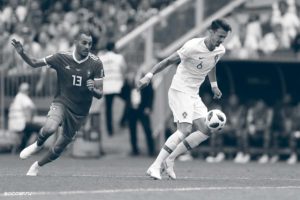INTRODUCTION & PURPOSE
The quantification of accelerations have been used to overcome the limitations of speed-based monitoring. For instance, players’ accelerations have been categorized based on intensity thresholds (such as the number of accelerations >2 m·s−2) (Buchheit et al., 2014). The physiological demands in a repeated sprint exercise (RSE) are considered to be mainly affected by acceleration intensity when running distance has been maintained constant. Previous evidence has reported that faster accelerations involve higher metabolic (e.g. lactate, RPE, and HR) and mechanical (e. g. dynamic stress load [DSL]) demands than less intense accelerations. However, such demands have not been clearly described in the literature and, therefore, a lack of data examining this topic exists.
“Previous evidence has reported that faster accelerations involve higher metabolic (e.g. lactate, RPE, and HR) and mechanical (e. g. dynamic stress load [DSL]) demands than less intense accelerations”
It has been recognized that the integration of both external and internal training load parameters may offer a better comprehension of the players’ training load. To date, no study has evaluated the effect of accelerations with different intensities (e.g. maximal and submaximal) on external and internal load parameters in soccer. Considering, the limited evidence about this argument, the aim of this study was to compare the acceleration contribution to training load indicators during a standardized RSE protocol in soccer players.
“The aim of this study was to compare the acceleration contribution to training load indicators during a standardized RSE protocol in soccer players”
METHODS
16 soccer players were included (mean ± SDs: age 21 ± 1 years; weight 71.1 ± 7.7 kg). RSE was 3 sets of 7 × 30 m sprints with 25 s and 3 min recovery between sprints and sets, respectively. RSE was performed using two protocols requiring either 10 m maximal acceleration (2.12 m·s−2 [RSE-MA]) or 10 m submaximal acceleration (1.66 m·s−2 [RSE-SA]). Global positioning systems (10 Hz; STATSports, Viper) were utilized to collect: high speed running (HSR), dynamic stress load (DSL), Heart Rate (HR) peak, time >85% HR peak, respiratory (RPEres) and muscular (RPEmus) rating of perceived exertion.
RESULTS
RSE-MA reported a higher load compared to RSE-SA in the following variables (Table 1): HSR (p = 0.037), DSL (p = 0.027), HR peak (p = 0.025), Time > 85% HR peak (p = 0.028), RPEres (p < 0.001), and RPEmus (p = 0.001), but no differences were found in Time > 75% HR peak (p = 0.826) or metabolic power (p = 0.519) (table 1).
Table 1. Summary of between differences of RSE-MA and RSE-SA (n = 16). Data are presented in mean±SDs.

RSE = Repeated sprint exercise; MA = Maximal accelerations; SA = Submaximal accelerations; SDs = Standard Deviations; CI = Confidence intervals; HR = Heart rate, HSR = High speed running; DSL = Dynamic stress load; RPEres = Respiratory rating of perceived exertion; RPEmus = Muscular rating of perceived exertion; bpm = beats per minute; m = metres; s = seconds, W = watt, AU = arbitrary units. * = Significant difference between RSE-MA and RSE-SA (p < 0.05).
FSI STATEMENTS
- Given that “acceleration intensity” is a crucial contributor to the external and internal load training demands of RSE in soccer, this variable should be controlled/monitored by researchers and practitioners.
- Regarding external load, you have not found a difference (trivial) between RSE-MA and RSE-SA in “metabolic power”, despite finding differences in the other measured variables. Be cautious about obtaining indirectly “metabolic power” variable, since it is highly related to the total distance traveled and the relative speed, but could not respond to changes in acceleration intensity.
- Focusing on contextualized game scenarios, when soccer player accelerates to gain ball possession, performs at maximum (or close to this) intensity. According to the authors, practitioners should design RSE exercises where “all-out” accelerations are requested to generate high external and mechanical load, which can stimulate greater physiological responses and adaptations.





